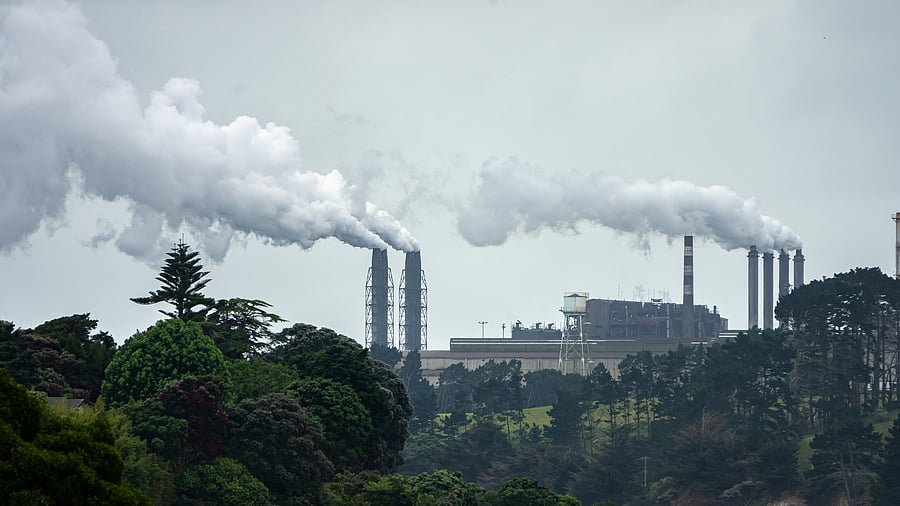
India’s draft GEI Target Rules risks becoming another carbon-intensity shell, advancing markets without measurably improving lives.
Credit: iStock Photo
India’s recent notification of the Greenhouse Gases Emission Intensity (GEI) Target Rules, 2025 marks a significant step forward in operationalising its compliance-based carbon market. Published in the Gazette of India on June 23, the draft rules give legal and administrative structure to the Carbon Credit Trading Scheme (CCTS) 2023, in an attempt to bring India closer to meeting its climate pledges under the Paris Agreement.
However, in an era marked by climate urgency, these rules merely translate lofty climate pledges into hard legal obligations for 282 industrial units including aluminium, cement, chlor-alkali, and pulp and paper. A review of global carbon-intensity regimes highlights deep structural shortcomings that the current GEI rules leave unaddressed.
What is being consistently overlooked by the Modi government is that climate action is not just an environmental story. It’s a public health story. With rising emissions come smog-filled cities, heatwaves, water scarcity, vector-borne diseases, and respiratory epidemics. Lowering carbon emissions is no longer a matter of ecological ethics, it is a public health necessity.
GEI rules focus on emissions per unit of output, taking a “carbon intensity” approach criticised by experts: intensity gains can be offset by rising production volumes. This allows absolute emissions to continue rising – a trap evident in China, where despite a 3.4% reduction in carbon intensity in 2024, overall emissions kept climbing and fell short of 2025 targets. In contrast, successful schemes like the EU-ETS couple intensity metrics with a tightening cap on total allowances to ensure real-world emissions decline.
While focusing only on four heavy industries, the rules ignore transport and agriculture which are sources of exhaust pollution and pesticide-linked illness. Schemes in California grant vehicle-emission waivers and include transport emissions; in New York, HFCs, and SF₆ emissions are being regulated alongside industrial CO₂. India’s omission here blocks the potential for substantial PM₂.₅ and NOₓ reductions that could improve urban health.
The GEI framework does not strengthen monitoring, reporting, or third-party verification. Experience in the early phases of the EU-ETS and Colorado’s oil-and-gas intensity regime demonstrates how weak baselines or sloppy accounting can render targets meaningless. Similarly, it perpetuates widespread double-counting and data manipulation in carbon schemes, an issue recognised in UN protocols.
Unlike Quebec’s environmental offset programme, which ties extra credits to demonstrable reductions in hospitalisations, India’s rules ignore health surveillance metrics. By failing to collect data on asthma incidence or cardiovascular admissions, the scheme misses a vital link to public impact and fails to engage communities suffering the pollution.
Without mechanisms to identify pollution hotspots, the carbon market may not translate into on-the-ground reductions, especially for marginalised communities. The Australian CPRS, despite its caps, drew criticism for granting free permits to big polluters without considering localised impacts.
Global lessons
EU-ETS Phase I & II: Issued too many allowances, delaying real emission cuts, highlighting the necessity of strict cap management. California Vehicle Standards: A suite of direct standards and waivers on transport emissions demonstrates how regulatory depth drives technological adoption. Quebec HFC Offsets: Successful linkage of carbon credits to avoided hospital visits shows how environmental policy can become public health policy. New York Cap-and-Invest: Broadening coverage to refrigerant gases and enforced allowances sets a high bar for comprehensive emissions accounting.
The GEI regime can be fortified by incorporating absolute emission caps. Modular inclusion of vehicle and farm emissions can be introduced using regulatory pathways as in California and New York. The rules need to systematically link emission projects to hospitalisation and air-quality data to ensure a community impact. Analyses of hotspots must be initiated and grants extended for local clean-air infrastructure, preventing carbon trading from reinforcing inequality.
India’s draft GEI Target Rules risks becoming another carbon-intensity shell, advancing markets without measurably improving lives. India has the policy space and the data infrastructure to build a market that delivers both climate and public health dividends. The global experience shows what is possible: when emission rules are rooted in equity, robustness, and accountability, they transform not only carbon accounting but the very air that millions breathe.
In a world boiling from delayed action, India has the rare opportunity to write policy that does more than cut carbon – one that cuts suffering. For a country battling rising temperatures, chronic respiratory illness, and environmental inequity, this convergence of carbon policy and public health could be its most powerful legacy.
India now stands at the threshold of a historic shift – from being a carbon-intensive economy to a carbon-smart, health-conscious one. The choices we make today will echo in the air we breathe tomorrow.
(The writer is an advisor to the Government of Karnataka on AMR/One Health and a Professor of Practice at St Joseph’s University, Bengaluru)